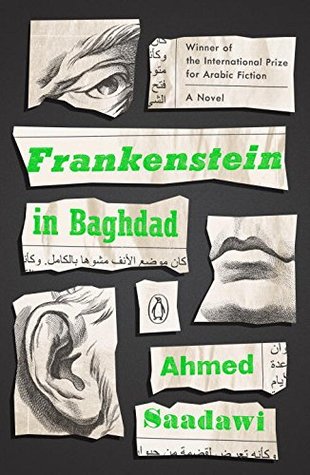More on this book
Community
Kindle Notes & Highlights
He said it was a Panasonic digital recorder and that he wanted four hundred dollars for it—a hundred for the recorder itself and three hundred for the story that was recorded on it. It was the strangest story that had ever come his way, he said, and a writer like me could use it to write a great novel.
Today he deceived me and tomorrow I will deceive someone else, also with good intentions, and so on.
I forgot about my novel and breathed in the smell of the trees that the moist night breeze carried from the river, and listened again, through the speaker on the digital recorder, to Mahmoud al-Sawadi’s confessions and the tales of the Criminal Who Has No Name.
MAHMOUD HAD TOLD me all the details over two days, and I had listened to the recordings on the digital device. I was struck by the fact that the voice on the recordings, attributed to the man Mahmoud called Frankenstein, was deep, like that of a well-known broadcaster.
He was a horrible creature, and even if he made a full recovery he would never look the same as before.
This wasn’t the face of Hadi the junk dealer; it was the face of someone he had convinced himself was merely a figment of his fertile imagination. It was the face of the Whatsitsname.
“My face changes all the time,” the Whatsitsname told the old astrologer that night. “Nothing in me lasts long, other than my desire to keep going. I kill in order to keep going.” This was his only justification.
He didn’t want to perish without understanding why he was dying and where he would go after death, so he clung to life, maybe even more than others, more than those who gave him their lives and parts of their bodies—just like that, out of fear.
They knew he didn’t bleed and didn’t let anyone catch a glimpse of his face. The definitive image of him was whatever lurked in people’s heads, fed by fear and despair. It was an image that had as many forms as there were people to conjure it. Although I had been immersed in this story for a long time, even I started to feel afraid.
But the junior astrologer strongly denied he was responsible for creating the criminal in the first place. He had succeeded only in exploiting it.
I will be John the Baptist, and you will be Christ. I will help the weak sapling become a mighty tree.
Be sure to remember the senior astrologer’s prediction, or try to forget it. It makes no difference, because what is inevitable will come true one day.
But what if one percent of his story were true? Isn’t life a blend of things that are plausible and others that are hard to believe?
On February 21, 2006, the supreme security commanders in Baghdad announced they had finally arrested the dangerous criminal that official reports called Criminal X, and that the public called the Whatsitsname, along with many other names.
They projected a large picture of him on a big screen and announced his name: Hadi Hassani Aidros, a resident of Bataween and commonly known as Hadi al-Attag, the junk dealer.
That wasn’t Hadi the junk dealer. That’s what most of the people in the coffee shop said too. But when they broadcast recordings of the criminal’s confessions, the voice was very similar to Hadi’s. How could he be a murderer?
It was inconceivable that this elderly man was a dangerous criminal. He had sat with him for hours: he was just a drunkard with an unstable personal life and a powerful imagination, but his story about the Whatsitsname still posed many questions for Mahmoud.
Aziz saw the spontaneous celebrations but still wasn’t convinced that Hadi was the criminal. It was impossible. But he went to dance outside the coffee shop anyway.


